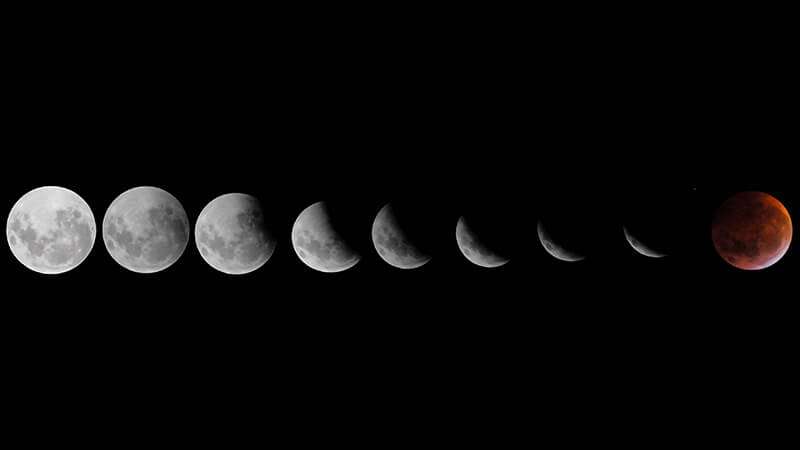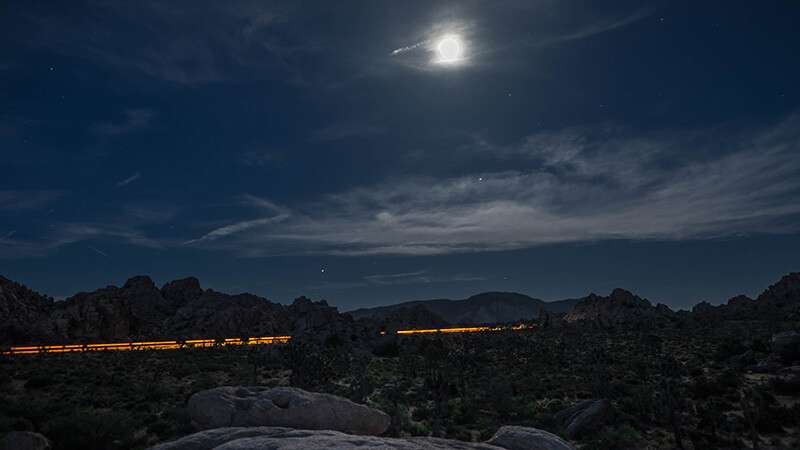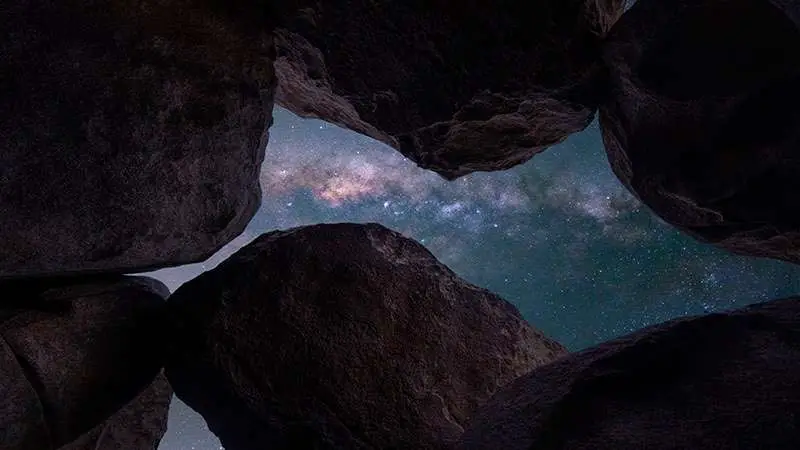The night sky has always fascinated stargazers and casual observers alike. Among the many marvels of the cosmos, the Milky Way consistently captures our imagination with its vast, star-studded expanse. Naturally, you might wonder, “Can You See the Milky Way with a Half Moon?”
As it turns out, the visibility of the Milky Way largely depends on how much moonlight interferes with the celestial view. With a half moon, the sky is considerably brighter, which makes it more challenging to see the Milky Way. However, it’s not impossible – you need to choose the right time, location, and favorable atmospheric conditions.
In a Nutshell
- The visibility of the Milky Way is affected by moon phases, with a half-moon making it more difficult to see.
- The right time, location, and atmospheric conditions can help improve your chances of viewing the Milky Way with a half moon.
- By following specific tips and techniques, stargazers and photographers alike can still enjoy the night sky with a half moon.
In this article, you get to
Understand how moon phases impact the visibility of the Milky Way.
Learn the best times, locations, and atmospheric conditions for viewing the Milky Way with a half moon.
Discover tips and techniques for both stargazers and photographers to enjoy the night sky during a half-moon phase.
Gain insights into the structure and location of our home galaxy, the Milky Way.
Explore the influence of different moon phases on the visibility of the Milky Way, from new moons to full moons.
Understand the impact of various light interferences like light pollution, sunlight, and moonlight on your stargazing experience.
Get practical advice on how to minimize moonlight interference when observing the Milky Way, including angle, flashlight choice, and timing.
Learn stargazing techniques to enhance your experience, including allowing your eyes to adjust, positioning yourself to block moonlight, and spotting brighter constellations and planets.
Discover recommended tools for stargazing, such as binoculars and telescopes, and how to use them effectively.
Get astrophotography tips and a checklist of tools for capturing stunning Milky Way images, even during a half-moon phase.
By the end of this article, you’ll have a comprehensive understanding of how moon phases affect Milky Way visibility, be equipped with valuable tips for stargazing and astrophotography during a half-moon phase, and be prepared to embark on your own celestial adventures with confidence.
Let’s dive right in.
Recommended For You
Understanding the Milky Way

The Milky Way is our home galaxy, a stunning spiral of stars, planets, and other cosmic wonders. Just like your neighborhood, it’s a place where we reside within the grander structure of the universe. Imagine a disk-shaped swirl of over 200 billion stars, with our solar system in one of its spiral arms.
Sure, we’re not in the city center, but our Solar System has a cozy spot about 25,000 light-years from the galactic center, or core. The Milky Way’s core houses a massive black hole, but don’t worry, we’re at a safe distance.
Here is a fun fact: Our galaxy has a cosmic neighbor, the Andromeda Galaxy, which is on a collision course with us!
But don’t panic; it’ll happen in about 4 billion years.
Now, let’s talk about spotting the Milky Way in the sky:
- Find a dark location away from city lights.
- Go on a night with as little moonlight as possible.
- Check the weather to avoid clouds.
A half-moon can make it trickier to spot the Milky Way. The extra light from the moon will decrease the contrast between the sky and the stars, making it harder to see the faint band of our galaxy. Remember, perfect conditions might be elusive, but patience is vital. Once you have your first glimpse of the Milky Way, it’s worth the effort!
How Moon Phases Affect Viewing the Milky Way

Influence of Moon Phases on Seeing the Milky Way
To give you a clearer understanding, let’s take a look at how different moon phases affect the visibility of the Milky Way:
- New Moon: Best time! The sky is at its darkest with almost no moonlight, making the Milky Way beautifully visible.
- Waxing Crescent: Good time. The moon is slowly becoming more illuminated, but the sky is still dark enough for decent visibility.
- First Quarter/Half Moon: Not the best. The brightness of a half-moon considerably reduces the visibility of the Milky Way.
- Waxing Gibbous: Even tougher. The brightness increases as the moon moves towards a full moon, and viewing the Milky Way gets more complicated.
- Full Moon: Worst time. The moon is fully illuminated, and the sky is so bright that it’s nearly impossible to see the Milky Way.
- Waning Gibbous: Similar to waxing Gibbous, the brightness of the moon makes it difficult to view the Milky Way.
- Last Quarter/Half Moon: Not ideal. Same issues as the first quarter/half moon.
- Waning Crescent: Improving! The moon’s illumination is decreasing, and the sky is getting darker, making the Milky Way more visible again.
So, when you plan your next stargazing adventure, remember these moon phases and how they affect the visibility of the Milky Way.
Can you see the Milky Way with a Half Moon?
Yes, you can see the Milky Way with a half moon, but there are better times than this one. When the moon is half illuminated, it still generates substantial moonlight that brightens the sky. This light pollution makes it more challenging to see the fainter details of the Milky Way.
Imagine trying to watch fireworks during the day – it’s possible, but the bright sky makes it tough to enjoy the show. It’s kind of like that with a half-moon and the Milky Way. But hey, a faint view is still better than no view!
FREE STARGAZING CHECKLIST
My 5-page Stargazing Checklist will enhance your astronomical observations.
Follow this free checklist to navigate the night sky with confidence, clarity, and a sense of preparedness for a rewarding stargazing experience.

Light Interference and the Night Sky

The journey to viewing the Milky Way starts with tackling various light interference.
Here’s how different light aspects may affect your stargazing experience:
- Light Pollution: This occurs mainly in urban areas due to streetlights, buildings, and traffic. The higher the light pollution, the harder it is to see the Milky Way. Aim for low-light pollution locations, like rural areas or dark-sky parks.
- Sun: Daylight is a no-go for observing the Milky Way. It’s essential to wait for nighttime, preferably between midnight and 5:00 a.m., when the sun is below the horizon.
- Moonlight: Viewing conditions become trickier with a half-moon, as its light outshines the fainter stars. Plan your stargazing during a new moon when the sky is darkest.
- Weather: Check your local weather forecast before heading out. Clear skies are ideal for stargazing, while rain or cloudy conditions will obstruct your view.
Let’s explore some tips to enhance your stargazing despite the half-moon.
- Angle: To minimize moonlight interference, position yourself at an angle where the moon is behind you or hidden behind trees or hills.
- Flashlight: Opt for a red light flashlight instead of conventional flashlights. Red light is less disruptive to your night vision and won’t cause as much glare.
- Timing: If the moon is low on the horizon on the opposite side of where you will observe the Milky Way, you can still have a reasonable view of the galaxy.
Remember, finding the perfect spot and ideal conditions for observing the Milky Way requires planning and persistence.
Stargazing and Observing the Night Sky

Stargazing Techniques
Stargazing with a half-moon can be challenging, but don’t worry! With the proper techniques, you can still enjoy the beauty of the night sky.
First, give your eyes time to adjust to the darkness, at least 20-30 minutes. Then, try to position yourself so a tree, building, or object block the bright moon. This will help minimize the amount of scattered moonlight in your field of view.
When observing, look for some of the brighter constellations like Scorpius, Sagittarius, and Cassiopeia. These will be easier to spot even with the moon lighting the sky. Keep an eye out for planets like Jupiter, which can often be seen with the naked eye.
Recommended Tools for Stargazing
To enhance your stargazing experience, consider using these tools:
- Binoculars: A pair of binoculars can help you spot fainter stars, clusters, and patterns. They’re portable and easy to use, making them an excellent choice for beginners.
- Telescope: For more serious observation, a telescope will allow you to zoom in on planets, star clusters, and even distant galaxies. Look for a beginner-friendly model to help you get started.
Here are a few tips for using these tools:
- Start with low-power magnification and progress to higher magnification as needed.
- Use a star chart or stargazing app to help you locate specific celestial objects.
- Practice your technique at night with less moonlight to familiarize yourself with your equipment.
Remember, stargazing is a rewarding experience, even with a half-moon. With patience and practice, you’ll soon be able to enjoy the wonders of the night sky regardless of the lunar phase!
Photographing the Milky Way

Astrophotography Tools
You’ll need some essential astrophotography tools to capture stunning Milky Way images.
Here’s a quick checklist:
- Camera: A DSLR or mirrorless camera with manual controls.
- Lens: A fast, wide-angle lens with a maximum aperture of f/2.8 or lower.
- Tripod: A sturdy tripod to keep your camera steady during long exposures.
- Intervalometer: A device that automatically triggers the shutter at preset intervals, useful for time-lapse photography or star trails.
Tips for Shooting the Milky Way
Now that you have your tools, let’s walk through some helpful tips for capturing the Milky Way:
- Dark sky: Half-moon phases make the task more challenging, but it’s still possible. Pick a location away from city lights and wait for the moon to set, or find a spot hidden behind a hill or trees.
- Aperture: Use the widest aperture on your lens to let in as much light as possible (like f/2.8).
- ISO: Choose a moderately high ISO setting, such as 1600 or higher, to enhance the camera’s sensitivity to light.
- Shutter speed: Long exposure times, such as 20-30 seconds, will let your camera sensor gather more starlight. Be cautious to stay within the 500 rule and introduce star trails unintentionally.
- Focusing: Set your lens to manual focus and focus on a bright star using live-view mode to ensure sharp images.
- White balance: Adjust the white balance to a cooler temperature (around 3800-4000K) to enhance the blues and purples of the Milky Way.
- Shoot in RAW: This format will give you more post-processing flexibility.
With these tips and tools, you’ll be on your way to capturing beautiful images of the Milky Way, even during a half-moon phase. Practice makes perfect, so keep shooting and refining your techniques.
Best Times and Locations for Viewing the Milky Way

Times of the Year to View the Milky Way
The Milky Way is best seen during Milky Way Season, which runs from February to October. You’ll succeed most between 00:00 and 5:00 on nights with a new moon.
While the half moon will add some light, you can still enjoy the view during this time.
Generally, the summer months – particularly around late September – provide the best conditions in the Northern Hemisphere, while spring offers prime viewing opportunities in the Southern Hemisphere.
- Northern Hemisphere: Summer months (June, July, August)
- Southern Hemisphere: Spring months (September, October, November)
Top Locations for Milky Way Viewing

When admiring the Milky Way, dark sky locations are essential. International Dark Sky Parks, certified by the International Dark Sky Association, offers the least light pollution, so they’re your best bet.
Here are some top dark sky locations in North America:
- Joshua Tree National Park (California): A brilliant spot to set up your tripod and gaze at the stars, as long as you avoid the prickly cacti!
- Bryce Canyon National Park (Utah): Its unique hoodoo rock formations provide a stunning foreground for Milky Way photos.
- Great Basin National Park (Nevada): Far from city lights and boasting some of the darkest skies in North America, it’s a stargazer’s dream.
- Grand Canyon National Park (Arizona): A natural wonder by day and a sky watcher’s paradise at night!
- Acadia National Park (Maine): A remote East Coast gem offering beautiful Milky Way views.
Keep in mind that the best times and locations for Milky Way viewing will depend on factors like your latitude, cloud coverage, and weather conditions.
Frequently Asked Questions
What is the best time to see the Milky Way?
The ideal time to observe the Milky Way is during the Milky Way season, which lasts from February to October, typically between midnight and 5 a.m. This timeframe, however, may vary based on your hemisphere, latitude, and factors like the moon’s phase.
How does the moon phase impact Milky Way visibility?
The moon’s phase can significantly impact your ability to see the Milky Way. When the moon is a new moon, the sky is darker, making it easier to spot faint stars and the Milky Way. During a full moon, the moon’s brightness can overpower the Milky Way’s light, making it more difficult to see.
Where are the best locations to observe the Milky Way?
Head to rural areas away from city lights to get the most breathtaking views of the Milky Way. Pristine darker skies are more common in the western US. Planning a dark sky trip based on the moon’s phase will enhance your Milky Way sighting experience.
What are the optimal conditions for astrophotography?
To capture stunning astrophotography, you should aim for clear skies, low light pollution, and as little moonlight as possible. Using a camera with good low-light capabilities and a fast lens will help you achieve better results when shooting the night sky.
When is the Milky Way visible in the Northern Hemisphere?
In the Northern Hemisphere, the Milky Way is most visible from late spring to early autumn, around midnight to the early morning. Remember that visibility depends on location, light pollution, and the moon’s phase.
Summary: Milky Way with Half Moon
Thank you for reading my article, Can You See the Milky Way with a Half Moon?
Despite the challenge of observing the Milky Way during a half-moon, it is indeed possible, but you’ll need a bit of preparation and patience. For the best experience, choose a location away from city lights and grab your binoculars or telescope to reveal the details.
- Mind the moonrise and moonset times. The less moonlight, the better your chances of observing the Milky Way.
- Let your eyes adjust to the darkness for at least 20 minutes. This will help you see fainter stars and celestial objects.
With these tips in mind, remember that our night skies are a treasure trove of beauty and wonder. Your persistence and curiosity will allow you to discover and enjoy spectacular views of the Milky Way.
Happy Stargazing!
Read my other articles in my Milky Way series:
- How Many Solar Systems in the Milky Way?
- When is Milky Way Season?
- Why Does the Milky Way Look Cloudy?
- Are all the stars we see in the Milky Way?
- Does the Milky Way orbit anything?
- Are the constellations in the Milky Way?
- How are Milky Way pictures taken?
- Can you see the Milky Way with a full moon?
- Can you see the Milky Way on a cruise?
- Can I See the Milky Way with My Eyes?




